6 Companion Plants for Fennel (With Pictures)
-
Visnja Radosavljevic
- Last updated:

Every plant grows better when it has a companion plant, and this includes fennel. However, finding the perfect companion plant for fennel can be challenging.
This plant is allelopathic, meaning it can kill garden plants or inhibit their growth. Because of that, fennel doesn’t have a good reputation when paired with other plants, and you typically need to keep it away from most other plants.
So, which companion plants are suitable for Fennel?
Although none of the companion plant options on our list are perfect for companioning fennel, most options can work pretty well, so read more about them below.

The 6 Companion Plants for Fennel
1. Dill
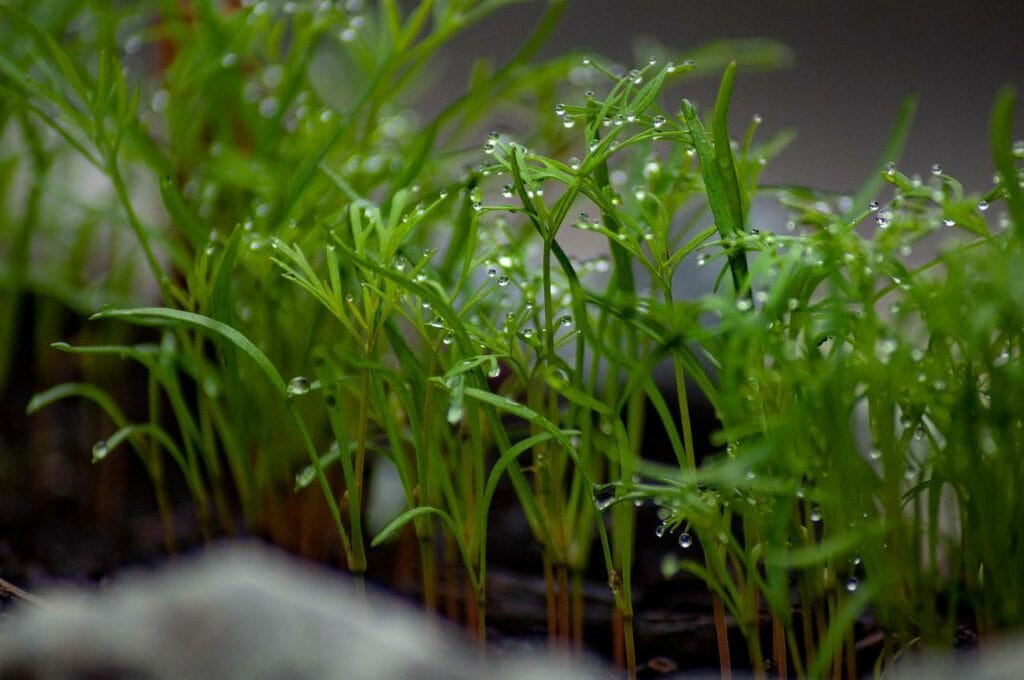
| USDA Hardiness Region: | 2 – 11 |
| Sun: | Full sun (at least 6–8 hours of direct sun a day) |
| Soil: | Well-drained, organic, slightly acidic |
Dill is an annual plant native to the Mediterranean and Eurasia. It attracts beneficial insects, like wasps, caterpillars, and bees to your garden. You should plant dill in full sun and provide well-drained, slightly acidic soil rich in organic matter. It can grow between 16–24 inches high, producing yellow and white flowers.
While some say dill is the best companion plant for fennel, others don’t agree on this. It’s true that dill is a plant that can survive next to fennel and positively affects its seeds. However, you should be aware that cross-pollination between these plants is possible, resulting in a hybrid plant, probably poor in taste.
- Survives next to fennel
- Positively affects its seeds
- Possible cross-pollination could lead to new hybrid seeds with poor taste
2. Peas
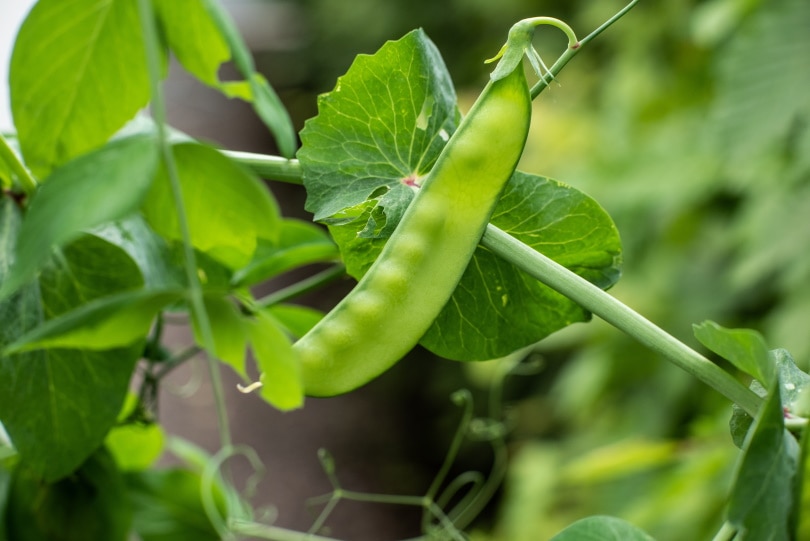
| USDA Hardiness Region: | 2 – 11 |
| Sun: | Full sun/partial shade (at least 6 hours of direct sun a day) |
| Soil: | Well-draining, slightly acidic |
Peas are annual, cold-season plants that can reach over 8 feet, depending on their variety. You should plant peas in spring, in a location with full sun to partial shade, and in well-draining, slightly acidic soil. While this plant can grow on its own, it also benefits from having a companion, and that’s where fennel comes into the picture.
Fennel is a good companion plant for peas as it will keep pests away and attract positive insects, allowing you a better harvest. However, as fennel can be invasive, it’s essential to monitor the plants and prevent the unwanted spreading of fennel.
- Fennel keeps pests away from peas
- Attracts positive insects
- Improves the harvest
- Fennel is invasive and can overpower your peas
3. Lettuce
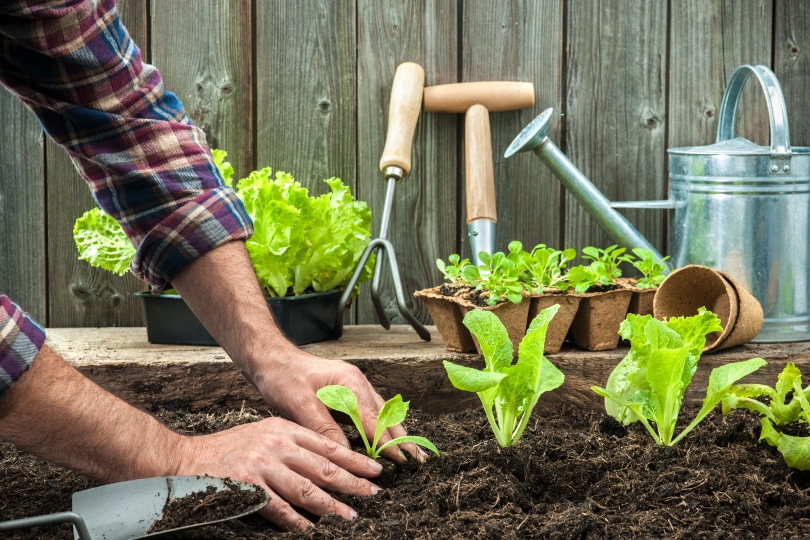
| USDA Hardiness Region: | 3 – 10 |
| Sun: | Full sun (at least 6–8 hours of direct sun a day) |
| Soil: | Well-draining, loose, nutrient-rich |
Lettuce is an excellent veggie grown throughout the world, and it’s one of the most widely planted plants in the USA. This plant loves cold weather but can thrive in USDA Hardiness Zones from 3–10. Typically, these plants reach 12–40 inches in height, and most people grow lettuce as an annual plant.
You can plant lettuce next to fennel, as this combination will keep the pests away, making your lettuce plant healthier. Also, lettuce and fennel can’t cross-pollinate so this combination won’t jeopardize your harvest. You only need to worry about your fennel overspreading, although that’s not too common when planted next to lettuce.
- Good combination for keeping pests away
- Cross-pollination is not possible
- Possibility of overspreading, although it’s quite low
4. Sage
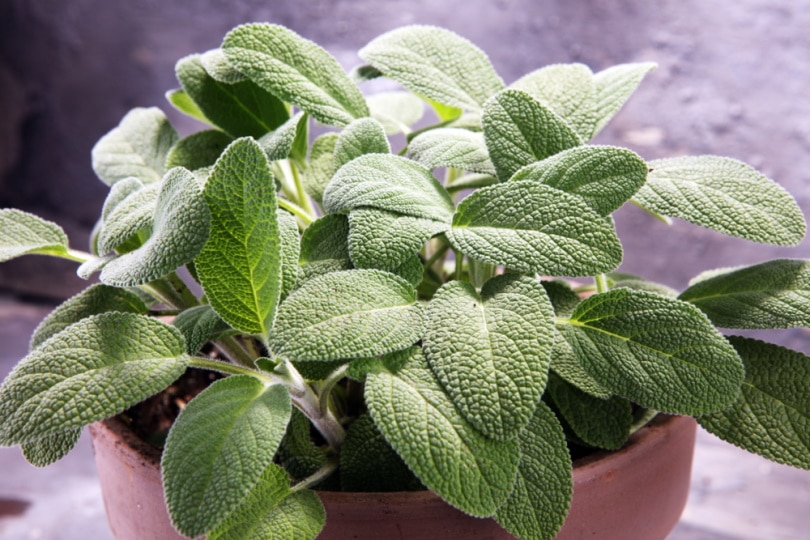
| USDA Hardiness Region: | 5 – 10 |
| Sun: | Full sun/partial shade (at least 6 hours of direct sun a day) |
| Soil: | Sandy, loamy, well-draining |
Sage is an aromatic, shrubby plant many people use for cooking and medical purposes. It grows best in full sun to partial shade and needs sandy, loamy, well-draining soil. If you provide the right conditions, sage is extremely low-maintenance and will grow without much special attention.
As fennel is also an aromatic plant, it makes a good companion plant for sage as the two plants complement each other. They can’t cross-pollinate, and fennel shouldn’t overpower your sage, although that can happen when fennel is the companion plant.
- Both are aromatic plants
- Cross-pollination is impossible
- Fennel could overpower sage
5. Cucumber
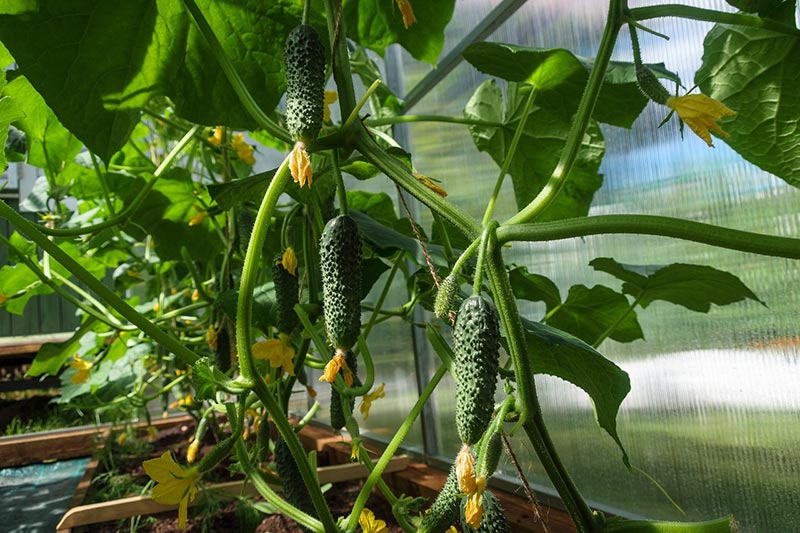
| USDA Hardiness Region: | 3 – 10 |
| Sun: | Full sun (at least 6–8 hours of direct sun a day) |
| Soil: | Well-draining, nutrient-rich |
Cucumber is another veggie on our list that can grow when you plant it next to fennel. This plant needs full sun to thrive and grows best in well-draining, nutrient-rich soil. Cucumber plants are typically 24–36 inches high, and you can grow them in gardens and containers.
If you plant fennel next to cucumbers, it will prevent pests and diseases, which will allow your cucumber to grow healthy and strong. Also, once you harvest these plants, you can combine them in a salad as their tastes have an excellent flavor.
- Fennel will prevent your cucumber from getting diseases and being attacked by pests
- Your cucumber will grow healthy and strong
- You can combine these plants in a salad after harvesting
- As with other plants, there’s a possibility of overspreading
6. Mint

| USDA Hardiness Region: | 3 – 8 |
| Sun: | Full sun/partial shade (at least 6 hours of direct sun a day) |
| Soil: | Rich, moist, slightly acidic |
Mint is a low-maintenance, perennial plant that comes in numerous varieties. Because of its refreshing flavor, mint is widely used for cooking. This aromatic plant needs full sun to partial shade and grows best in rich, moist, and slightly acidic soil. If you provide proper care for your mint plant, you can expect it to be between 1 and 2 feet high.
Both fennel and mint can be invasive, so they challenge one another, which makes them good companion plants. While mint tries to spread, it prevents fennel from spreading and vice versa. Also, these plants can’t cross-pollinate, meaning you won’t have to worry about poor-quality hybrid plants next season. Mint needs moisture from soil more than the soil fennel needs, which might affect the growth of your fennel plant.
- Mint prevents fennel from overspreading
- These plants can’t cross-pollinate
- Fennel has different soil requirements

Worst Companion Plants for Fennel
Fennel typically doesn’t have a lot of friends when it comes to companion planting. Most plants won’t grow near fennel, which is why you should keep it away from any plant that could suffer in growth.
Below are some of the plants you should never plant near fennel.
Nightshade Plants
- Tomatoes: If you plant fennel next to tomatoes, it could inhibit the growth of your tomatoes.
- Potatoes: If you plant fennel next to potatoes, they probably won’t grow properly.
- Peppers: If you plant fennel next to peppers, they could grow, but they would struggle a lot and not reach their potential.
- Eggplants: If you plant fennel next to eggplants, they won’t be able to grow successfully.
Caraway
Caraway is an aromatic plant also known as meridian fennel. While it may seem like a good idea to plant it next to fennel, planting caraway next to this plant is not such a good idea. When these plants are near one another, fennel overpowers caraway and prevents the germination of its seeds. Because of that, you should keep these two plants as far away from one another as possible.
Coriander
When coriander and fennel are next to one another, both plants will mess up the growth and development of the other plant. Fennel will prevent germination for coriander, while coriander will prevent germination for fennel. Also, a fennel plant might not even produce seeds next to coriander.
Beans
While beans can grow next to fennel, they’re likely to have disturbed growth, which would affect the whole harvest. This won’t happen to every bean plant next to fennel, but it’s a possibility, so you should be careful.

Conclusion
Fennel is tasty and easy to grow, but it can represent a true headache for the gardener until they find a good spot for planting, especially considering it needs a companion plant. If you want to plant fennel, but you’re looking for a good companion plant, be sure to consider some of the options on our list.
Remember to keep fennel away from plants from the nightshade family, as well as coriander, caraway, and beans.
- “5 Perfect Pairs for Companion Planting”
- “Planting fennel: seeds, location & companion plants”
- “Fennel Companions”
- “Fennel Doesn’t Have Friends: A Guide to Companion Planting”
- “Companion Planting Fennel”
- “Fennel: How to Grow and When to Plant in Your Backyard or Patio Garden!”
- “Fennel Companion Planting Chart”
- “How to Grow Fennel Plant in Your Garden”
Featured Image Credit: nnattalli, Shutterstock
Contents
